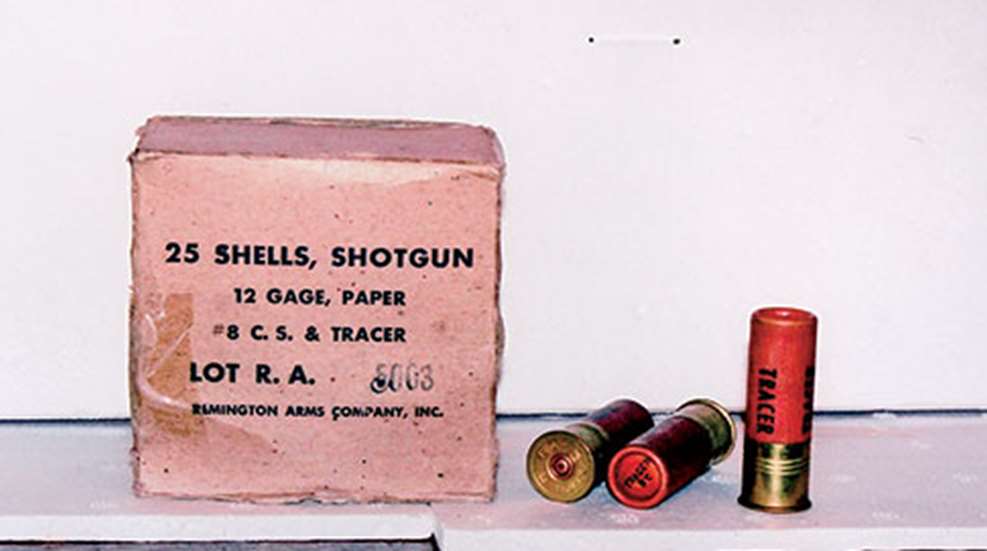
Q: The shotshells in the enclosed pictures are marked "TRACER." What can you tell me about these shells? What was their purpose, and when were they made and used?
A: Tracer shotshells were developed for the military as a training aid during WWII for training aerial gunners in both day and night time air-to-air shooting. They were used on military training ranges for the most part and produced by civilian companies for military contracts. The Remington 12-gauge shells in your photo came with a warning on the box that reads, “The tracer capsule in this shell has a much longer range and higher trajectory than the No.8 lead shot. Personnel in ‘trap’ houses or within 600 yards of the muzzle should be suitably protected. Do not store in high humidity or excessive heat.” They are not kidding. And, for civilian ranges, there is a real danger that the tracer elements of these shells would set the woods on fire which could, in turn, create serious problems for your shooting range. While it is tempting to try a few of them, you would be well advised to keep them as curios or relics for their historical interest.
–Angus Laidlaw
Originally published November, 2006


































